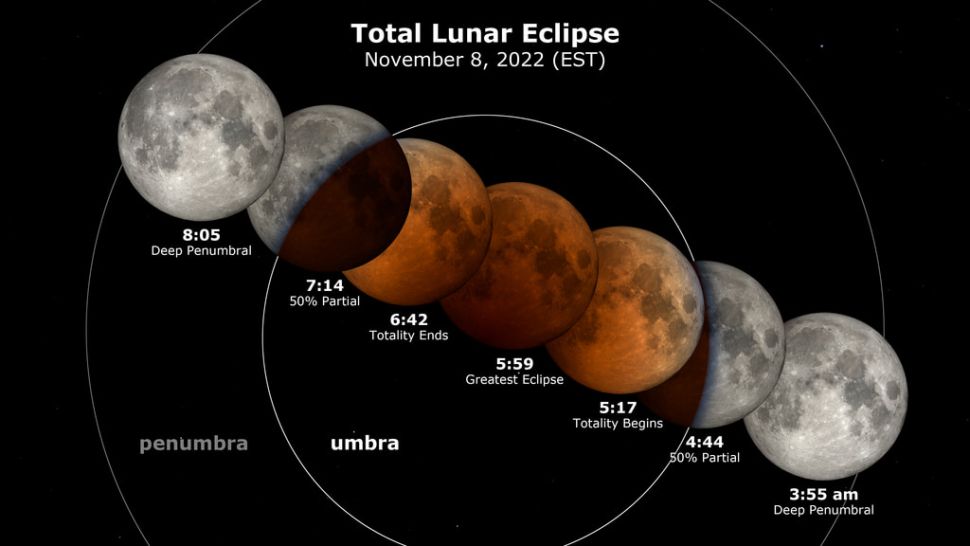An lunar eclipse of a Beaver Blood Moon will appear in the sky above Alberta in the early hours of Tuesday.

It has been part of the dance between the sun and the moon for billions of years and a story passed down by Indigenous Peoples for generations.
For Alberta’s Blackfoot people, the appearance of eight phases of the moon symbolizes the passing of time.
First Nations people traditionally used the lunar calendar to mark the changing of the seasons, with the moon acting not only like a clock and calendar, but also as a compass.
“That was all knowledge that was used to be able to do all of the extensive traveling that Indigenous people did,” said Jennifer Howse, an educational specialist at the Rothney Astrophysical Observatory just south of Calgary. “Then you knew that it was time to move on, perhaps, to where your berry picking grounds were.”
Monday’s weather was a far cry from berry season, but was expected to make way for a cold clear sky early Tuesday. And astronomers aren’t missing the opportunity to witness space in motion.
“This motion is happening all the time out in space – around us and it makes the Earth have seasons – all that stuff. But when you watch an eclipse it’s like that stuff happens right in front of your eyes,” said Phil Langill, an astronomy instructor at the University of Calgary.
- Enter at your own risk: New home security camera aims paintballs at intruders
- Boston Dynamics unveils ‘creepy’ new fully electric humanoid robot
- Nova Scotia scraps spring bear hunt idea, public ‘very divided’ on issue
- Ontario First Nation calls for chemical plant to be shut down amid ‘dangerously high’ benzene levels
The eclipse’s peak is expected to last 86 minutes. During that time viewers will see the moon change in colour — with a blood red moon on full display.
“The Earth’s atmosphere is a filter and the Earth’s shadow is red. The moon is going to pass into this shadow, and that’s why is looks red,” explained Langill.
It will be visible to the naked eye.
The Royal Astronomical Society of Canada is setting up telescopes both at Nose Hill and 64th Avenue in Calgary, as well as at North Glenmore Park to view the event between 1 a.m. and 6 a.m. (MST).
Partial umbral eclipse begins: 2:09 a.m. Moon enters Earth’s shadow.
Total lunar eclipse begins: 3:16 a.m. Moon turns dark orange or red.
Greatest eclipse: 3:59 a.m. Mid-point of the eclipse.
Total lunar eclipse ends: 4:41 a.m. Moon begins to leave the shadow.
Partial umbral eclipse ends: 5:49 a.m. Moon exits Earth’s shadow.



Comments